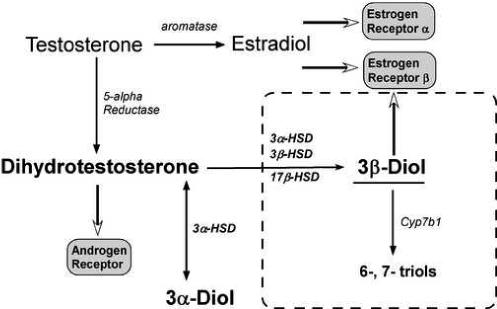Figure 1.

Diagram depicting central dogma concerning the actions of testosterone through metabolism by aromatase to estradiol or 5-alpha reductase to dihydrotestosterone. A novel mechanism of action for dihydrotestosterone is outlined by dotted lines. According to this hypothesis, dihydrotestosterone is converted to the estrogen receptor beta binding molecule, 3β-Diol (5α- androstan-3β, 17β-diol) by the combined actions of the enzymes 3 alpha hydroxysteroid dehydrogenase (3α-HSD), 3beta hydroxysteroid dehydrogenase (3β-HSD) or 17beta hydroxysteroid dehydrogenase (17β-HSD). The actions of 3β-Diol can be reduced by their further metabolism to the inactive compounds, 6-, or 7- triol by the enzyme cyp7b1. The molecule, 3α-Diol undergoes a bidirectional conversion from DHT by 3α-HSD and as such can act as a sink for further production of DHT.
